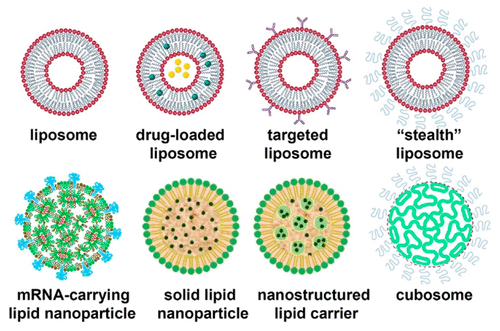Our official English website, www.x-mol.net, welcomes your
feedback! (Note: you will need to create a separate account there.)
脂质纳米颗粒─从脂质体到 mRNA 疫苗递送,研究多样性和进步的前景
ACS Nano ( IF 15.8 ) Pub Date : 2021-06-28 , DOI: 10.1021/acsnano.1c04996 Rumiana Tenchov 1 , Robert Bird 1 , Allison E Curtze 1 , Qiongqiong Zhou 1
Affiliation

|
脂质纳米颗粒 (LNP) 已在整个制药行业出现,成为提供各种治疗药物的有前景的载体。 LNP 作为 COVID-19 mRNA 疫苗的重要组成部分目前备受关注,在有效保护 mRNA 并将其运输至细胞方面发挥着关键作用。脂质体是 LNP 的早期版本,是一种多功能纳米药物输送平台。多种脂质体药物已获批准并应用于医疗实践。后续几代脂质纳米载体,例如固体脂质纳米粒子、纳米结构脂质载体和阳离子脂质-核酸复合物,表现出更复杂的结构和增强的物理稳定性。 LNP 能够封装治疗药物并将其递送至体内特定位置,并在所需时间释放其内容物,为治疗多种疾病提供了一个有价值的平台。在这里,我们根据对 CAS 内容库(最大的人工管理的已发表科学知识库)的分析,展示了 LNP 相关科学出版物的概况,包括专利和期刊文章。确定了上升趋势,例如纳米结构脂质载体和固体脂质纳米颗粒成为多种制剂的首选平台。讨论了 LNP 制剂作为药物递送平台的最新进展,例如抗肿瘤和核酸治疗以及疫苗递送系统。还评估了其他领域的挑战和增长机会,例如医学成像、化妆品、营养和农用化学品。本报告旨在为那些对 LNP 纳米技术、其应用及其开发的全球研究工作感兴趣的人提供有用的资源。

"点击查看英文标题和摘要"




















































 京公网安备 11010802027423号
京公网安备 11010802027423号